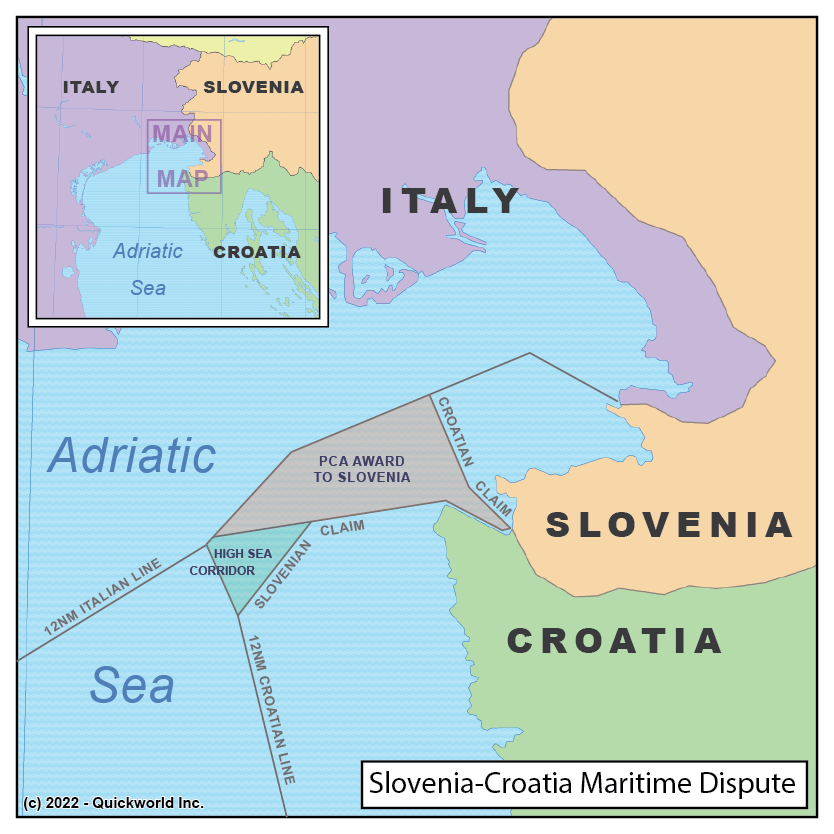Our Series on Tiny Disputes takes us to the former Yugoslavia. Upon the end of the Federation in 1991, the new independent republics of Croatia and Slovenia could not agree on the precise delineation of their maritime borders.
The issue comes from the specific location of the land borders on the Eastern end of the Istrian Peninsula. Slovenia is left with a very narrow strip of coastline along the Gulf of Trieste, and the territorial waters of the country are fully surrounded by the 12nm waters of Italy to the North and Croatia to the South. While Slovenia asked for a redrawing of maritime border to enable their ships to leave port without entering foreign territorial waters, Croatia steadfastly refused any arrangement of the kind and the situation was deadlocked for awhile.
Things changed when Slovenia was awarded entry into the European Union in 2004. As Croatia itself was a candidate to entry, Slovenia was able to leverage their right to veto Croatian entry to the Union into negotiating a corridor in the Adriatic Sea, free of foreign territorial waters. Both nations agreed to a binding arbitration from the European Commission in 2012, and Croatia was welcomed into the European Union in 2013. The decision of the Commission of June 29, 2017 stated that some disputed waters were to be under Slovenian jurisdiction while an extended high seas corridor would allow for free Slovenian passage into the Adriatic Sea. However, as of 2022, Croatia has not formally accepted this decision.
The Slovenia-Croatia Maritime Dispute


